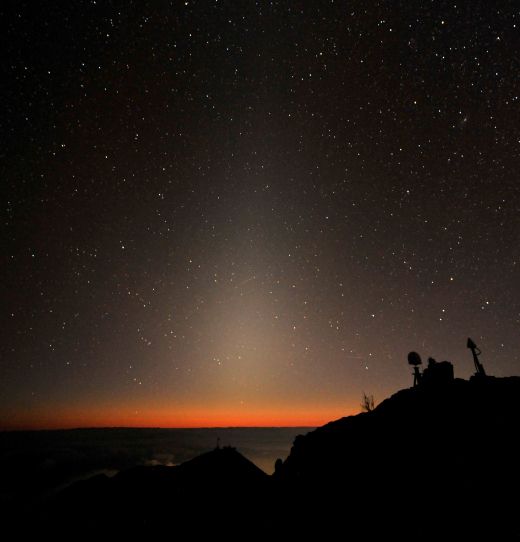At https://spaceweather.com [7th July 2021] https://spaceweatherarchive.com/2021/07/07/a-big-glowing-cloud-of-marsdust/ … we learn that dust storms on Mars spill into space. According to research published in the AGU journal JGR Planets Mars appears to leak a lot of dust. It fills a huge volume of the inner solar system with gritty debris. You can even see it with the naked eye. The bright triangle in this image from the Haleakala Observatory on Hawaii is mars dust …
 … it contributes to the zodiacal lights. The pyramid in the sky is sunlight scattered by dust in the plane of the solar system. NASAs Juno spacecraft fliew through the dust cloud on its way to Jupiter between 2011 and 2016.
… it contributes to the zodiacal lights. The pyramid in the sky is sunlight scattered by dust in the plane of the solar system. NASAs Juno spacecraft fliew through the dust cloud on its way to Jupiter between 2011 and 2016.
Over at https://phys.org/news/2021-07-astronomers-oversized-black-hole-populatio… … a paper in Nature Astronomy says that distinguishing features in star cluster Paloma 5 are 'likely' due to an oversized black hole population of over a hundred of them – in the centre of the cluster. They even claim that 20 per cent of the star cluster mass is made up of black holes. The authors simulated the evolution of each star in the cluster until its final destruction – or supernova [star explosion]. According to their modelling, the cluster will disappear within a billion years – when the cluster will consist wholly of black holes. Wow.
Paloma 5 is a globular cluster discovered in 1950. It is in the Serpens constellation. See https://doi.org/10.1038/s41550-021–01392-2
